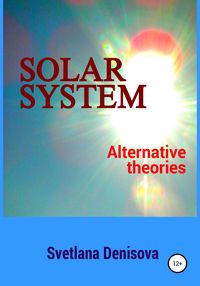Kitabı oku: «Solar system / Alternative theories», sayfa 3
Apparently, it is the Great flood caused the death of mammoths. Not only the mammoths, but all the flora and fauna, that existed on the edge of the glaciers, was washed away and destroyed by the Great flood. People of Komi, Khanty and Mansi have legends stating, that when the water has filled in all ground, the mammoth floated in water, but the birds sat down on their "horns" and mammoth has sunk (see Wikipedia).
After the Flood new life cycle has begun on the Earth.
Our civilization will survive another Great flood. It will be one of the stages of the Apocalypse, foretold by John Evangelist. A new Flood will be different, because there are no ice mountains in the north of continents. The Earth will turn again. The glaciers of Antarctica and Greenland will melt. The Bulgarian clairvoyant woman Vanga predicted it. The global sea level will rise and will flood the coastal zones and lowlands of the continents. Europe will turn into islands and the seas. World hunger will be longest in the history. Nostradamus has predicted it.
2. Theory of non-constant orbits
Not circular-wise, but spiral-wise
Space bodies may have different shape of orbit: 8-shape, elongated and circular. This article considers only the movement of bodies along orbits, which are close the circular. Usually planets and some their satellites move along such orbits. In our time one can hear a lot about the expanding universe, but the official assumption is, that the planets orbits do not change. Nevertheless, they do not move along the circle, but along the spiral.
Spiral movement of celestial bodies was known since the most ancient times. For example, the ancient Greek philosopher Plato wrote in the dialogue Timaeus:”… Movement of identical bodies imposes a spiral bending to all star circles due to the opposite direction of two [main movements]”. Here by the opposite direction of two [main movements] should be understood as the counteraction of the gravity force Fg and centrifugal force Fc. Now these concepts are being disputed, given other names. But it does't change their essence.
In the ideal case, when these two forces are equal, the speed vector of a rotating body is directed along the tangent line to the orbit, perpendicular to radius. However, in the actual world, it is difficult to find something ideal. The predominance of one force over another leads to the speed vector (v) deviation toward the greater force and rotation along the spiral. If gravitation force Fg prevails (Fg>Fc), the speed vector deviates to the center, and movement goes along a descending spiral. If centrifugal force prevails (Fc>Fg), movement goes along an ascending spiral.

The last satellite can "come off" the star, if gravitation force is significantly reduced. Possibly, that’s the way the free moons emerge in space. The satellite, nearest to the center, rotates on a descending spiral, because the gravitation force predominate. Ultimately, it can lead to the satellite fall on the central body. Both these forces are not constant and tend to equilibrium. If the orbit becomes more distant, the speed will be decreasing and, consequently, centrifugal force will be decreasing too. That is, as if the centrifugal force adjusts to the changing force of gravity. Although these two forces are not equal, they can be regarded as relatively equal at this point of time Fc=-Fg.
In the simplified version centrifugal force is defined under the formula: Fc=-mp*v2/R,
mp – mass of planet, v – speed of planet, R – radius of rotation.
Under the Newton’s law the gravity force is defined by the formula:
Fg = G*ms*mp/R2, ms
ms and mp – mass of the Sun and planet, R2 – square of the distance between them, G – gravitational constant ~6.67384*10-11m³/(kg/с²).
Let's record equality of two forces:
G*ms*mp/R2=– mp*v2/R.
Let's simplify the expression by multiplying the both sides of the equality by R and dividing by mp, and we will get:
G*ms/ R=-v2
It follows, that the less the Sun mass is and the more is the distance from it, the slower is the movement of planets in the orbit. Conversely, than the Sun mass is greater and the the radius is smaller, the speed is greater. This is confirmed by the modern calculations and measurements of the planets speed (see table 1). Another conclusion from this formula is, that the orbital velocity does not depend on the mass of the satellite, but only on the mass of the central body and the distance to it. Saturn has two orbits, on each of which three different satellites are (for example: Diona, Elena, Polydeuces), but they have the same speed. The mass of the Sun continuously decreases, decreasing the speed of the satellites.
With the change of the orbit, the speed of a celestial body in the orbit changes too. This was also known to ancient Greek astronomers: «… ones of them moved along a greater circle, the others – along the smaller. They moved quicker on smaller circles, but slower on the greater ones» [Plato, dialogue "Timaeus"]. With the orbit decrease, the speed of celestial body and centrifugal force increase.
